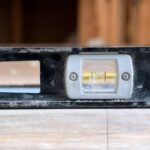Are you struggling with poor wifi reception in your home? In this article, we will explore the importance of a strong and reliable wifi connection, and provide you with valuable tips on how to improve wifi reception in your home. Whether you’re working from home or simply enjoying some leisure time online, having a good wifi signal is essential for a smooth and uninterrupted internet experience.
The first step in improving your wifi reception is to assess your current setup and identify any weak signal areas. We will guide you through the process of evaluating your home’s wifi coverage, so that you can pinpoint problem areas and begin working towards a solution.
From there, we’ll help you choose the right router for your specific needs, optimize its placement for maximum signal strength, and explore the use of wifi extenders and repeaters to boost coverage in dead zones.
In addition to addressing hardware solutions, we’ll also discuss strategies for minimizing interference and optimizing your internet plan to increase speed and bandwidth. By the end of this article, you’ll be equipped with all the knowledge you need to troubleshoot common wifi problems and enjoy a strong, reliable connection at home. Let’s get started on improving your wifi reception today.
Assessing Your Current Wifi Setup
When it comes to improving wifi reception in your home, the first step is to assess your current wifi setup. This involves identifying areas within your home where the wifi signal is weak or non-existent.
One way to do this is by using a wifi analyzer tool, which can provide valuable information about the strength of your wifi signal in different areas of your home. These tools can be downloaded as apps on your smartphone or accessed through various software options for your computer.
Another way to identify weak signal areas is by simply walking around your home with a mobile device connected to wifi and noting any areas where the signal drops or becomes noticeably weaker. Keep in mind that certain factors such as distance from the router, physical obstructions, and electronic interference can all contribute to poor wifi reception in specific areas of your home.
Once you have identified weak signal areas within your home, you can then make informed decisions about how to improve the quality of your wifi connection in those areas. Whether it’s through router placement adjustments, the use of wifi extenders or repeaters, or minimizing interference from other devices, understanding where the weak signal areas are is crucial in finding effective solutions for improving your home’s wifi reception.
| Wifi Reception Improvement Tips | Points |
|---|---|
| Use a Wifi Analyzer Tool | To identify weak signal areas |
| Walk around with a connected mobile device | To note where the signal drops |
| Consider factors like distance and obstructions | When assessing weak signal areas |
Choosing the Right Router
When it comes to improving wifi reception in your home, one of the most crucial steps is choosing the right router. The type and quality of router you have can significantly impact the strength and stability of your wifi signal. Here are some factors to consider when selecting a router for your home:
- Wifi Standard: Look for routers that support the latest wifi standards such as 802.11ac or 802.11ax, as they offer better performance and coverage compared to older standards.
- Speed and Bandwidth: Consider the speed and bandwidth requirements of your household. If you have multiple devices streaming HD video or online gaming, opt for a router with higher speed capabilities.
- Range: Assess the size of your home and choose a router with sufficient range to cover all areas, including dead zones.
In addition to these considerations, it’s important to research and compare different router models from reputable brands. Reading reviews from other users can also provide valuable insights into the performance and reliability of different routers.
Once you’ve chosen the right router for your home, it’s essential to set it up properly for optimal performance. This includes positioning the router in a central location, away from obstructions and interference sources, such as thick walls or electronic devices that emit electromagnetic waves that can disrupt wifi signals.
Overall, selecting the right router is a critical step in improving wifi reception in your home. By considering factors such as wifi standard, speed and bandwidth, range, and brand reputation, you can ensure that you have a reliable and robust wifi network that meets the needs of your household.
Optimizing Router Placement
When it comes to improving wifi reception in your home, the placement of your router plays a crucial role in determining the strength and coverage of your wifi signal. Placing your router in the right location can make a significant difference in the performance of your wifi network. One of the most effective ways to maximize signal strength is by optimizing the placement of your router within your home.
First, it is essential to place your router in a central location within your home to ensure that the wifi signal can reach every area efficiently. This means avoiding placing the router in corners or near walls where the signal may be obstructed. It’s also important to keep your router away from large obstacles such as metal objects, concrete walls, or appliances that can interfere with the wifi signal.
Additionally, elevating your router can help improve its range and coverage. Placing it on a high shelf or mounting it on a wall can prevent interference and ensure that the signal is distributed evenly throughout your home. By following these simple tips, you can maximize the strength and reach of your wifi signal, resulting in improved connectivity and faster internet speeds.
Lastly, consider investing in a high-quality external antenna for your router to further enhance its performance. This can provide better coverage and stronger signals for areas that were previously experiencing weak reception. By taking these steps to optimize the placement of your router, you can effectively improve wifi reception in your home and enjoy a reliable internet connection throughout every room.
| Tip | Description |
|---|---|
| Central Location | Place router in central area away from obstructions. |
| Elevate Router | Consider placing router on high shelf or mounting on wall. |
| External Antenna | Invest in high-quality external antenna for better coverage. |
Using Wifi Extenders and Repeaters
A common issue in many homes is dead zones – areas where wifi signal is weak or nonexistent. Fortunately, there are solutions to this problem that can help improve wifi reception throughout your home. One of the most effective ways to boost coverage in dead zones is by using wifi extenders and repeaters. These devices work by capturing the existing wireless signal and re-transmitting it, effectively extending the range of your wifi network.
How to Improve Wifi Reception in Your Home With Wifi Extenders and Repeaters
- Choose the Right Device: When selecting a wifi extender or repeater, consider factors such as compatibility with your current router, signal strength, and coverage area.
- Placement is Key: Place the extender or repeater in an area where the original wifi signal is still strong, but on the periphery of its range. This will allow it to capture and amplify the signal effectively.
- Setup and Configuration: Follow the manufacturer’s instructions for setting up the device properly. This may involve connecting it to your existing network and configuring settings such as SSID and password.
- Test and Adjust: Once the extender or repeater is set up, test the signal strength in previously weak areas of your home. If necessary, adjust the placement or configuration of the device to optimize performance.
By utilizing a combination of wifi extenders and repeaters strategically placed throughout your home, you can effectively eliminate dead zones and ensure strong wifi reception in every room. This can greatly enhance your online experience, whether you’re streaming movies, gaming, or simply browsing the web without interruptions.
Minimizing Interference
When it comes to improving wifi reception in your home, one of the key factors to consider is minimizing signal interference. Signal interference can significantly impact the strength and reliability of your wifi connection, leading to slow speeds and dropped connections. Fortunately, there are several strategies you can implement to reduce interference and optimize your wifi signal.
One effective way to minimize interference is by selecting the right wireless channel for your router. Wifi routers operate on different channels within the 2.4GHz and 5GHz frequency bands. By choosing a less congested channel, you can reduce the likelihood of signal interference from neighboring networks and electronic devices. Most modern routers have the option to automatically select the best channel, but it’s worth checking and adjusting this setting manually for optimal performance.
In addition to selecting a clear wireless channel, you can also reduce signal interference by avoiding physical obstructions that may block or disrupt the wifi signal. Placing your router in a central location within your home and elevating it off the floor can help minimize obstructions and improve overall signal coverage.
Additionally, positioning the router away from electronic devices such as cordless phones, microwave ovens, and Bluetooth devices can also mitigate potential sources of interference. By implementing these strategies, you can enhance the quality of your wifi signal and enjoy a more reliable internet connection throughout your home.
Upgrading Your Internet Plan
When searching for ways on how to improve wifi reception in your home, it’s essential to consider upgrading your internet plan. Increasing the speed and bandwidth of your internet connection can significantly enhance your overall wifi experience, especially if you have multiple devices connected at the same time.
Assessing Your Current Internet Plan
Before making any changes, it’s important to assess your current internet plan. Check with your service provider to determine the maximum speed and bandwidth available in your area. You can also run a speed test using online tools to measure your current internet performance.
Considerations for Upgrading
When considering an upgrade, take into account the number of devices that are typically connected to your wifi network, as well as the types of activities being performed. Streaming high-definition videos or online gaming may require a faster internet connection compared to basic web browsing or email usage.
Consulting With Your Service Provider
Reach out to your internet service provider to discuss available upgrade options. They can provide information on higher-speed plans or packages that better suit your needs. Some providers may also offer promotional deals or discounts for upgrading, so it’s worth exploring all available options before making a decision. Additionally, inquire about any equipment upgrades that may be necessary to support the increased speed and bandwidth.
Troubleshooting Common Wifi Problems
Resetting Your Router and Modem
If you’re experiencing frequent disconnections or slow internet speeds, one of the first troubleshooting steps you can take is to reset your router and modem. Unplugging them for a few seconds and then plugging them back in can often resolve minor connectivity issues. This simple action allows the devices to reboot and establish a fresh connection with your internet service provider, potentially improving your wifi reception.
Updating Firmware and Drivers
Another common culprit for wifi problems is outdated firmware or drivers on your router or connected devices. Check the manufacturer’s website for any available updates for your router’s firmware, as well as drivers for your computer’s wifi adapter. Keeping these software components up-to-date can address security vulnerabilities and performance issues that may be affecting your wifi reception.
Adjusting Channel Settings
Wifi routers operate on specific channels within the 2.4GHz and 5GHz frequency bands. If you live in an area with many neighboring wifi networks, congestion on certain channels can lead to signal interference and reduced reception.
Using a wifi analyzer tool, you can identify the least congested channels in your area and adjust your router’s settings to broadcast on those channels instead. This simple adjustment can significantly improve wifi reception in your home by minimizing interference from other networks.
By following these troubleshooting tips, you can address common wifi problems and improve overall connectivity in your home. Applying these strategies alongside the previous sections’ recommendations on choosing the right router, optimizing placement, using extenders/repeaters, minimizing interference, and upgrading your internet plan will ultimately help you enjoy a strong and reliable wifi connection throughout your home.
Conclusion
In conclusion, having a strong and reliable wifi connection at home is essential for modern living. With the increasing reliance on online communication, entertainment, and work-from-home setups, it’s crucial to ensure that your wifi reception is optimized for maximum performance. By following the tips provided in this article, you can improve your home’s wifi reception and enjoy seamless connectivity throughout your space.
As discussed, assessing your current setup and choosing the right router are critical first steps in improving wifi reception. Optimizing router placement, using wifi extenders and repeaters, minimizing interference, and upgrading your internet plan are all effective strategies to ensure a strong signal and coverage in every area of your home. Troubleshooting common wifi problems can also help resolve any connectivity issues that may arise.
By implementing these methods for improving wifi reception in your home, you can create a reliable network that meets the demands of today’s digital lifestyle. Whether you’re streaming movies, working remotely, or simply browsing the web, a strong wifi connection will provide a smooth and uninterrupted experience. So take the time to assess your current setup and make the necessary adjustments to enjoy the benefits of a strong and reliable wifi connection at home.
Frequently Asked Questions
How Can I Boost My Wi-Fi Signal at Home?
Boosting your Wi-Fi signal at home can be done in several ways. You can start by repositioning your router to a central location, away from obstacles and interference. Upgrading your router or using a Wi-Fi extender/repeater can also improve the signal strength.
Why Is My Wi-Fi Signal So Weak in My House?
A weak Wi-Fi signal in your house can be caused by several factors such as the distance between your device and the router, physical obstructions like walls and floors, electronic interference from other devices, or even outdated equipment. Identifying and addressing these issues can help improve the signal.
Do Wi-Fi Signal Boosters Work?
Wi-Fi signal boosters can work effectively in improving Wi-Fi coverage in your home. They work by amplifying the existing signal and transmitting it to areas with poor coverage. However, it’s important to choose the right type of booster for your specific needs and ensure proper placement for optimal results.

I’m thrilled to have you here as a part of the Remodeling Top community. This is where my journey as an architect and remodeling enthusiast intersects with your passion for transforming houses into dream homes.





